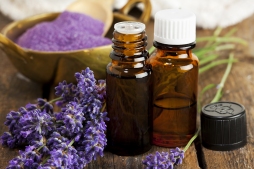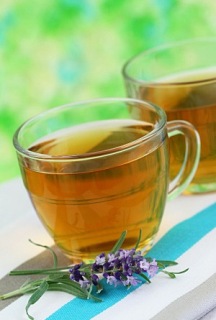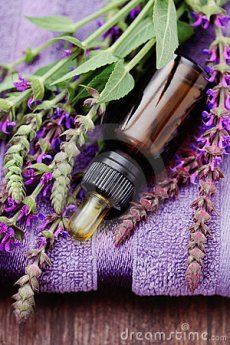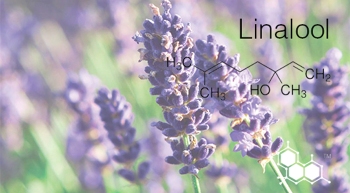General information of the plant
- Lavandula angustifolia, more commonly known as English Lavender.
- It is a strong aromatic shrub that is part of the Lamiaceae family.
- It tends to grow as high as 1 to 2 meters (3.3 to 6.6 ft.) tall.
- Its leaves tend to be 2-6 cm long with a narrow width
- The flowers are pinkish-purple (Lavender)
Origin of the plant
- Although its common name is English Lavender, it is actually not native to England. This plant is native to the Mediterranean, such as Spain, France, Italy, and Croatia.
- Currently it can be found growing from Cape Verde and the Canary Islands, Europe across to northern and eastern Africa, and the Mediterranean, southwest Asia to southeast India.
- These plants tend to grow in more temperate climates as ornamental plants.
Current uses:
- Currently, Lavender is known to have antiseptic and anti-inflammatory properties in order to treat wounds, burns, and sunburns.
- For aromatherapy it is known to help with treating anxiety, insomnia, depression, and restlessness
Traditional uses:
Traditionally, the lavender plant was used as one of the holy herbs, used by the biblical temple, in order to prepare the Holy Essence and Nard, an oil used for anointment in religious ceremonies. Additionally, it was used by the Romans in order to scent their beds, baths, clothes and even hair. It was also used during the renaissance, where the flower was used to protect against infections during the Plaque. Lastly, it was used during the First World War, where nurses bathed soldiers’ wounds with lavender washes.
Parts of the plant being used
The leaves and the flowers are the main parts more commonly used when it comes to using the flower for culinary purposes, making tea, and using this flower as an essential oil.
Medicinal properties:
Currently, there are two common forms of using this flower for medicinal purposes. This includes brewing the flowers to create a tea and using both the leaves and flowers to obtain an essential oil.
- Tea medicinal properties

- Anxiety Cure – induces calming effect on a person’s mind and body.
- Gastrointestinal Issues- These include colic, bowel infection and flatulence.
- Mood Stabilizing Effects – Helps with frequent mood swings by stabilizing ones mood.
- Skin Issues- This includes cuts, wounds, and sores
- Hair Issues- Helps with problems of hair loss
- Insomnia- Lavender has been used as a sedative to help people fall asleep.
- Pain- found to be effective with headaches
Essential Oil medicinal properties:
- Antioxidant protection- The oil has been found to produce 3 of your most powerful antioxidants.
- Balances blood sugar levels- It is known to help protect against increase in blood glucose levels, metabolic disorders, and weight gain.
- Improves mood and supports brain – lavender has been used to treat neurological issues like migraines, stress, anxiety, and depression.
- Heals burns and cuts – Lavender is known to have antimicrobial properties which helps speeds up the healing of burns, cuts, scrapes, and wounds.
- Helps with sleep and insomnia – lavender oil was found to improve the overall quality of sleep by 60%. This included length of sleep, time it took to fall asleep, restfulness and reduced symptoms of insomnia.
Chemical constituents
- Lavender is comprised of over 100 constituents, but the two most common compounds found are Linalool and Linalyl acetate.
- Linalool is a natural occurring terpene found in many flowers including Lavender. It gives off a delightful floral scent which is the main characteristic of Lavender. Traditionally, many have inhaled the scent of lavender, including many that contain Linalool, which has helped with reducing stress, fight inflammation, and combat depression.
- The effects of Linalool include anti-anxiety, antidepressant, sedative, anti-inflammatory, anti-epileptic and analgesic
- Linalyl acetate are found to have many biological effects when using as a therapeutic. It is known to reduce skin rashes, balance natural oils in the skin, and aid with both dry and oily skin. Additionally, it is found that this compound helps reduce the duration of menstrual cycle and relieve them from menstrual pain.
Current research
Currently, there is a numerous amount of research being done on the English Lavender. Research on this flower varies from looking at its antioxidant properties, its properties in reducing heart injury, and its antibacterial activity. Additionally, there is extensive research focused primarily on the essential oil of this plant. Its focal research points are its anti-inflammatory activity, aid in quality in sleep, wound healing activity, and its aid in dealing with anxiety. Below are a couple of summary’s on current research.
Anti-inflammatory activity of linalool and linalyl acetate constituents of essential oils.
This study evaluated individually the anti-inflammatory properties of Linalool, which were found to be present in various amounts in distilled or extracted essential oils. Additionally, linalyl acetate is also frequently present in the essential oils, so the anti-inflammatory property of this compound was also examined. The study found that both compounds reduced edema, and had a prolonged effect. The results obtained indicate linalool and linalyl acetate play a major role in anti-inflammatory activity found in essential oils which suggest that these compounds can be used as anti-inflammatory agents.
Lavender and the Nervous System
This review article looked at the effect so lavender on the nervous system by looking at animal studies and clinical trials where Lavenders essential oil were used for anxiety and depression, and sleep. For the animal experiments the mice were continuously exposed to lavender essential oils for 7 days which significantly inhibited anxiety- and depression-like behaviors that was tested by elevated plus-maze and forced swimming tests in rats. For the clinical trials, it investigated the efficacy of oral lavender oil preparation in patients. It was found that there was anti-anxiety effects found in these patients that were taking the oil extract. In addition, lavender improved associated symptoms such as restlessness, disturbed sleep, and somatic complaints and had a beneficial influence on general well-being and quality of life. When looking at sleep and lavender it was found that single-blind randomized studies investigated the effectiveness of lavender odor on quality of sleep showed that lavender improved the mean scores of sleep quality in fifteen healthy students, in sixty-four ischemic heart disease patients, and in thirty-four midlife women with insomnia. In conclusions, although these studies showed promising effects, more standard experiments and researches are needed to confirm the beneficial effect of lavender in the neurological disorders.
Sources:
Peir Hossein K., M.K. Ghadiri, A. Gorji. 2013. Lavender and the nervous system. Evidence -based complementary and Alternative Medicine. Vol 2013. Article ID 681304.
Peana A.T., D’Aquila P.S., Panin F., Serra G., Pippia P., Moretti MD., 2002. Anti-inflammatory activity of linalool and linalyl acetate constituents of essential oils. Phytomedicine 9(8):721-6.


